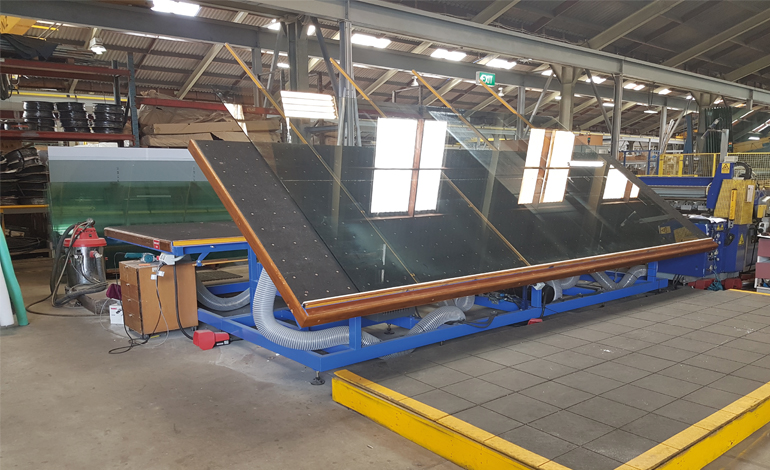One company’s experience of worker injury, enforcement action from a Government regulator and their efforts to improve their own and others’ work in the glass industry. Article supplied by Woods Glass (NZ).
In January 2017 a Woods Glass worker was seriously injured while attempting to clear a jam on a CNC controlled glass-cutting table. The worker who was operating the machinery at the time of the incident’s ankle was crushed and lacerated. He spent two weeks in hospital and 15 weeks in recovery.
The effects of the incident for Woods Glass have been many, including the cost of the injury on the worker’s health and wellbeing; the impact on other workers; and a drop in business productivity.
Following an investigation into the incident, WorkSafe alleged breaches of the Health and Safety at Work Act 2015. Woods applied for an enforceable undertaking as an alternative to prosecution. The enforceable undertaking is an agreement between a duty holder and WorkSafe NZ, involving a series of commitments by Woods toward improving safety not just in their workplace, but in other workplaces as well.
Woods, considered a leader in glass cutting in New Zealand, with production facilities in Auckland, Wellington and Christchurch, employs over 100 people. Its work exposes workers to numerous risks, and while the company had always prioritised safety, it was clear from the incident and the injury sustained by a valued worker, that there were improvements to its systems to be made.
WorkSafe highlighted four areas where Woods “failed to ensure, so far as was reasonably practicable, the health and safety of workers”:
1. Engaged a competent person to undertake a systematic risk assessment of the machine to NZ standards;
2. Developed and implemented an effective lock out tag system for the machine;
3. Developed, implemented and monitored compliance with a Standard Operating Procedure covering all aspects of the machine’s operations;
4. Ensured suitable and effective guarding was installed on the machine.
The enforceable undertaking signed in June 2018 committed to initiatives that would go some way to atoning for Woods’ failures under the Act: ensuring that the risk of workers being injured on all three of Woods’ sites are mitigated appropriately; and providing benefits to wider industry and community workplace health & safety.
Immediately following the incident, a prohibition was also placed on the machinery requiring Woods to improve the safety of the machine with the following:
• Additional perimeter fencing;
• Installation of a sliding interlocked guard door and cut out reset switch;
• A lock-out tag -out box;
• Implementation of a Maintenance Manual, and a Pre-start book;
• Introduction of staff certification for machine operation, including formal training from the machinery supplier’s agent.
As part of the enforceable undertaking, Woods has been working with the victim of the incident. He remains an employee, and has now received reparation, training and certification from the machinery agent.
The victim has also helped identify other hazards beyond the CNC machine, including the adjacent glass break-out unloading table. Woods has spent $100,000 buying a new one.
Other elements undertaken include significant investment in H&S training and certification for many staff, as well as new safety procedures, meetings, pre-start books for machinery, establishing a local scholarship and more.
It’s clear from the above that the cost of an incident is not about paying a fine. It’s about the cost of an injury to a valued worker – who for nearly four months was unable to go about his everyday activities.
The glass-cutting table was unavailable for 39 days during the investigation and during this period Woods-contracted companies supplied and cut glass for them. The incident and the use of unsafe equipment impacted the cost efficiency of the business’s ability to operate at usual capacity.
The lesson learned: the true cost of ineffective health & safety practices, for both the victim and employer, are often unexpected and significant.
The sum of the commitments entered into by the enforceable undertaking total nearly $300,000. A large cost for a business, but a cost that Woods says will be worthwhile if it can get its worksites and systems into a position to protect its workers from serious harm.
Its is also looking forward to seeing how its commitments to improving safety in the wider industry are received and implemented.
• “This feature is based on an article first published in the September 2018 issue of Joiners Magazine”

